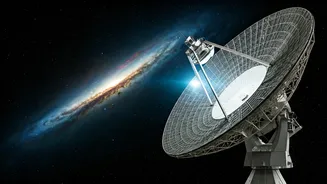Initial Radio Signal
The detection of a radio signal from 3I/ATLAS is a groundbreaking achievement in astronomical research. Until recently, observations of interstellar objects
were primarily limited to their trajectories and visual characteristics. The discovery of this radio signal means scientists can get a look at the object's inner workings. The radio signal gives scientists access to previously inaccessible information about interstellar objects. This signal enables a deeper exploration into the object's physical properties. Data from the signal can help in understanding the chemical components, and physical conditions from which it was made.
Origins and Composition
Analysis of the radio signal is providing clues about the origins and composition of 3I/ATLAS. Initial data suggests that the object has a unique composition, unlike anything seen within our solar system. This points toward the diverse environments in the vast expanse of the galaxy. It is possible that 3I/ATLAS originated from a planetary system or perhaps the remnants of an ancient star. Understanding the origins of this object helps in understanding star and planet formation. Studying the object's composition will allow scientists to compare it with other objects from different regions. This will help them develop a more complete picture of the formation and evolution of interstellar objects.
Future Research Prospects
The detection of the radio signal marks just the beginning of scientific investigation into 3I/ATLAS. Further analysis of the signal could uncover additional characteristics of the object. Scientists plan to use multiple telescopes to analyze the signal. This multi-faceted approach will allow for more advanced modeling. The data from 3I/ATLAS can provide insights into the early stages of our solar system. Further research promises more insights into the composition of interstellar objects. Scientists are eager to learn more about its journey.











